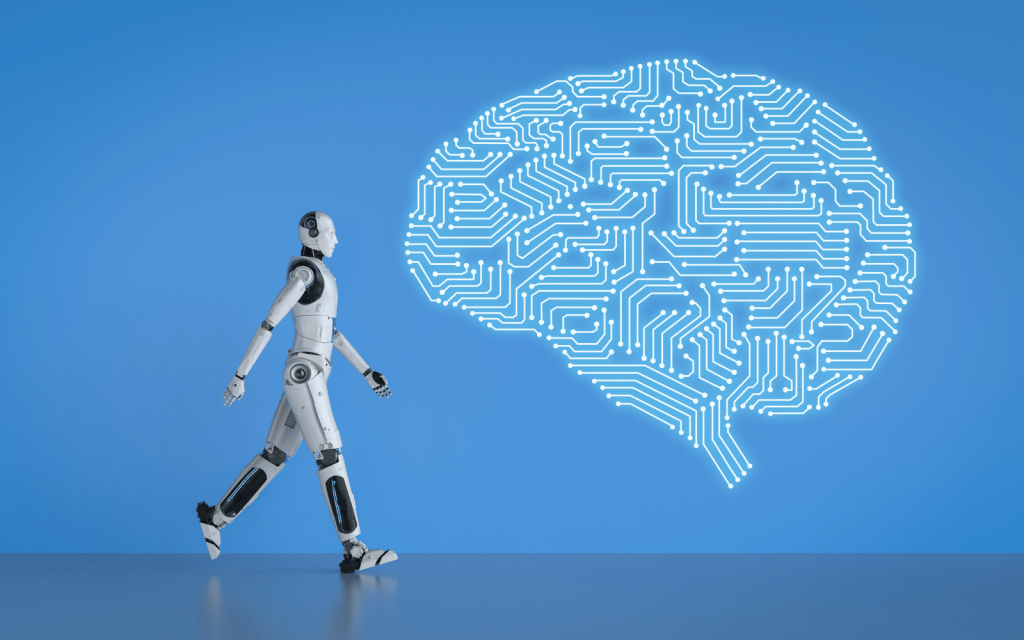Imagine brain scanning technology improves greatly in the coming decades, to the point that we can observe how each individual neuron talks to other neurons. Then, imagine we can record all this information to create a simulation of someone’s brain on a computer.
This is the concept behind mind uploading – the idea that we may one day be able to transition a person from their biological body to a synthetic hardware. The idea originated in an intellectual movement called transhumanism and has several key advocates including computer scientist Ray Kurzweil, philosopher Nick Bostrom and neuroscientist Randal Koene.
The transhumanists’ central hope is to transcend the human condition through scientific and technological progress. They believe mind uploading may allow us to live as long as we want (but not necessarily forever). It might even let us improve ourselves, such as by having simulated brains that run faster and more efficiently than biological ones. It’s a techno-optimist’s dream for the future. But does it have any substance?
The feasibility of mind uploading rests on three core assumptions.
- first is the technology assumption – the idea that we will be able to develop mind uploading within the coming decades
- second is the artificial mind assumption – the idea that a simulated brain would give rise to a real mind
- and third is the survival assumption – the idea that the person created in the process is really “you”. Only then does mind uploading become a way for you to live on.
How plausible is each of these?
The technology assumption
Trying to simulate the human brain would be a monumental challenge. Our brains are the most complex structures in the known universe. They house around 86 billion neurons and 85 billion non-neuronal cells, with an estimated one million billion neural connections. For comparison, the Milky Way galaxy is home to about 200 billion stars.
Where are we on the path to creating brain simulations? Right now, neuroscientists are drawing up 3D wiring diagrams (called “connectomes”) of the brains of simple organisms. The most complex comprehensive connectome we have to date is of a fruit fly larva, which has about 3,000 neurons and 500,000 neural connections. We might expect to map a mouse’s brain within the next ten years.
The human brain, however, is about 1,000 times more complex than a mouse brain. Would it then take us 10,000 years to map a human brain? Probably not. We have seen astonishing gains in efficiency in similar projects, such as the Human Genome Project.
Read More: How uploading our minds to a computer might become possible
It took years and hundreds of millions of dollars to map the first human genome about 20 years ago. Today, the fastest labs can do it within hours for about $100. With similar gains in efficiency, we might see mind-uploading technology within the lifetimes of our children or grandchildren.
That said, there are other obstacles. Creating a static brain map is only one part of the job. To simulate a functioning brain, we would need to observe single neurons in action. It’s not obvious whether we could achieve this in the near future.
The artificial mind assumption
Would a simulation of your brain give rise to a conscious mind like yours? The answer depends on the connection between our minds and our bodies. Unlike the 17th-century philosopher Rene Descartes, who thought mind and body are radically different, most academic philosophers today think the mind is ultimately something physical itself. Put simply, your mind is your brain.
Still, how could a simulated brain give rise to a real mind if it’s only a simulation?
Well, many cognitive scientists believe it’s your brain’s complex neural structure that is responsible for creating your conscious mind, rather than the nature of its biological matter (which is mostly fat and water).
When implemented on a computer, the simulated brain would replicate your brain’s structure. For every simulated neuron and neural connection there will be a corresponding piece of computer hardware. The simulation will replicate your brain’s structure and thereby replicate your conscious mind.
Today’s AI systems provide useful (though inconclusive) evidence for the structural approach to the mind. These systems run on artificial neural networks, which copy some of the brain’s structural principles. And they are able to perform many tasks that require a lot of cognitive work in us.
The survival assumption
Let’s assume it is possible to simulate a human brain, and that the simulation creates a conscious mind. Would the uploaded person really be you, or perhaps just a mental clone?
This harks back to an old philosophical puzzle: what makes it the case that when you get out of bed in the morning you’re still the same person who went to bed the night before?
Philosophers are divided broadly into two camps on this question. The biological camp believes morning-you and evening-you are the same person because they are the same biological organism – connected by one biological life process.
The bigger mental camp thinks the fact that we have minds makes all the difference. Morning-you and evening-you are the same person because they share a mental life. Morning-you remembers what evening-you did – they have the same beliefs, hopes, character traits, and so on.
So which camp is right? Here’s a way to test your own intuition: imagine your brain is transplanted into the empty skull of another person’s body. Is the resulting person, who has your memories, preferences and personality, you – as the mental camp thinks? Or are they the person who donated their body, as the biological camp thinks?
In other words, did you get a new body or did they get a new mind? A lot hangs on this question.
If the biological camp is right, then mind uploading wouldn’t work, assuming the whole point of uploading is to leave one’s biology behind. If the mental camp is right, there is a chance for uploading, since the uploaded mind could be a genuine continuation of one’s present mental life.
Wait, there’s a caveat
But wait: what happens when the original biological-you also survives the uploading process? Would you, along with your consciousness, split into two people, resulting in two of “you” – one in a biological form (B) and one in an uploaded form (C)?
No, you (A) can’t literally split into two separate people (B ≠ C) and be identical with both at the same time. At most, only one of them can be you (either A = B or A = C).
It seems most intuitive that, after a split, your biological form would continue as the real you (A = B), and the upload would merely be a mental copy. But that makes it doubtful that you could survive as the upload even in the case where the biological-you is destroyed.
Why would destroying biological-you magically elevate your mental clone to the status of the real you? It seems strange to think this would happen (although one view in philosophy does claim it could be true).
Worth the risk?
Unfortunately, the artificial mind assumption and the survival assumption can’t be conclusively empirically tested – we would actually have to upload ourselves to find out.
Uploading will therefore always involve a huge leap of faith. Personally, I would only take that leap if I knew for certain my biological hardware wasn’t going to last much longer.
- is a Senior lecturer, The University of Western Australia
- This article first appeared in The Conversation



